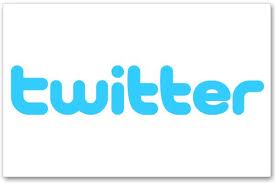B.W. WILSON PAPER OFFERS INTERACTIVE FORUMS WITH CONVERSATIONS ON INDUSTRY NEWS AND KNOWLEDGE - ALL DESIGNED TO KEEP YOU IN THE LOOP ON THE LATEST DETAILS !
Please visit our blog, WWW.PAPERISFUN.COM and sample the freshest ideas in paper innovations.
::::: YOU CAN ALSO FIND US ON :::::

 AT @BWWilsonPaper AT @BWWilsonPaper
Some links of Environmental Interest :
Paper Online - Renewable Resources
Forest Stewardship Council
Paper Because
Print Grows Trees
Independent Third Party Certifications & Environmental Terminology
Throughout our database, you will find papers that are certified by independent environmental concerns and that have specific environmental terminology associated with their features and benefits. Below are brief outlines of what each of these represents.
• FSC Certified
FSC is an abbreviation for the Forest Stewardship Council. FSC is an independent, non-governmental, not-for- profit organization established to promote the responsible management of the world's forests. FSC defines specific chain-of-custody standards throughout the supply chain. "FSC Certification provides a credible link between responsible production and consumption of forest products, enabling consumers and businesses to make purchasing decisions that benefit people and the environment as well as providing ongoing business value." B. W. Wilson Paper is FSC Certified in all locations. Find out more at www.fsc.org
• Green Seal Certified
"Green Seal is a non-profit organization that uses science-based programs to empower consumers, purchasers, and companies to create a more sustainable world." Green Seal Certified papers generally contain post consumer waste fiber. Find out more at www.greenseal.org
• SFI Sustainable Fiber Sourcing
The Sustainable Forestry Initiative 'promotes sustainable forest management in North America through 14 core principles that promote sustainable forest management, including measures to protect water quality, biodiversity, wildlife habitat, species at risk, and Forests with Exceptional Conservation Value.' Find out more at www.sfiprogram.org
• Rainforest Alliance Certified
"The Rainforest Alliance works to conserve biodiversity and ensure sustainable livelihoods by transforming land-use practices, business practices and consumer behavior." Find out more at www.rainforest-alliance.org/about
• EcoLogo Certified
"EcoLogo™ Standards are developed in an open, public and transparent process spanning approximately 12-18 months, and are designed so that only the top 20% of products available on the market can achieve certification." Find out more at www.ecologo.org
• Processed Chlorine Free
Also seen abbreviated as "PCF", processed chlorine free refers to the bleaching process used to whiten paper. Chlorine is generally held to be harmful to the environment, particularly the aquatic environment. PCF is a term used when papers have a recycled fiber content, and the bleaching process used to return the fiber to the pulp stream is chlorine free. Find out more at www.chlorinefreeproducts.org
• Made with Green Power
For all grades that carry the Green Power designation, 100% of the electricity used to manufacture those products is matched with renewable energy credits (RECS) from Green-E certified energy sources.
• Made with Biogas Energy
Paper made using a gas produced from the decomposition of waste in a landfill. Biogas is transported to the paper mill by pipeline and reduces greenhouse emissions. For more info, please see www.cascades.com/papers/biogas_environment.php
• Made with Windpower
Wind-generated electricity is used for manufacture. In the case of Mohawk Papers, 100% of the electricity used is matched with Renewable Energy Certificates (RECs) fron Green-E Certified windpower projects. See www.mohawkpaper.com/pdfs/Mohawk%20and% 20Windpower.pdf
• Green-E Certified
"Green-E is the nation's leading consumer protection program for the sale of renewable energy and greenhouse gas reductions in the retail market." See more at www.green-e.org/
• Totally Chlorine Free
Also seen abbreviated as "TCF", this refers to pulp that has been bleached without any type of chlorine, or that has not been bleached at all. See link listed above for more info.
• Elemental Chlorine Free
Also see abbreviated as "ECF", this refers to pulp that has been processed elementally chlorine free. This process replaces elemental chlorine with chlorine dioxide in the pulp bleaching process.
• Carbon Neutral
A term to describe "products, operations and activities which have had their emissions calculated and reduced where possible. The remaining Carbon Dioxide emissions are then 'offset' through credits that fund renewable, emission-free energy projects such as wind farms and solar installations." See more at www.mohawkpaper.com/pdfs/Mohawk%20and%20Carbon%20Neutral.pdf
• PCW/PCRF
PCW is an abbreviation for Post Consumer Waste, and PCRF stands for Post Consumer Recovered Fiber. Post Consumer Fiber is that which has been collected from end users and recycled, which diverts the fiber from land fills. The EPA standard defines recycled paper as containing at least 30% Post Consumer Fiber in uncoated papers, and 10% Post Consumer Fiber in coated papers.
Glossary of Paper Terminology
• Brightness
The US standard for measuring the brightness of white papers is the GE (also know as TAPPI) brightness standard, which is what is noted in our specifications. ISO standards of brightness are different than GE, since alternative measurement methods are used. Paper with a higher brightness reflects more light. This term shouldn't be confused with 'whiteness' which refers to the shade of the paper.
• Caliper
The thickness of a sheet of paper, expressed as thousands of an inch or points.
• Acid Free
This terms refers to papers made without acid forming components. Acid content can deteriorate or yellow paper over time.
• Grain
This refers to the alignment of fibers in the direction of their flow on the paper machine. Folding & scorig work best when done in the paper's grain direction.
• Opacity
The ability of paper to obstruct light transmission and the show-through of printing. Opacity is particularly important in two sided print projects, as it affects appearance and readability.
Paper is renewable, recyclabe and sustainable.
Did you know ? The Forest Products Industry plants more than 1.7 million trees per day.
Don't believe everything you read at the bottom of an email - get the facts today at www.paperbecause.com

| 